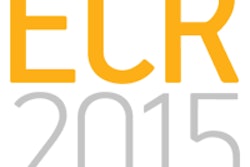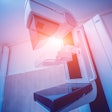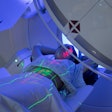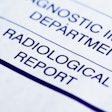
Detailed, standardized service documentation is essential to the effective management of radiology departments, but what form should this documentation take if it is to achieve full transparency?
Economic imperatives are forcing the health sector to cut costs, and radiology clinics are no exception. Hospital radiology is usually regarded from an expense perspective and treated as a cost center, so savings appear to be simple and effective.
 Dr. Mathias Cohnen.
Dr. Mathias Cohnen.The Senior Consultants' Forum at the German Radiological Society (CAFRAD, Chefarztforum der Deutschen Röntgengesellschaft) sought to adopt a more comprehensive view that takes account of the services provided and results in credible performance indicators. In 2008, it developed its own benchmarking project involving some 80 radiology institutes, which has since been continuously updated to create a wide-ranging database partitioned horizontally and vertically.
It was initially expected that service documentation based on the physicians' fee regulation (GOÄ, Gebührenordnung für Ärzte), which has remained unchanged for a long period, would provide relatively standardized results. However, it was fairly soon evident the data were heterogeneous, and this could not be explained by differences in the services provided. Following extensive discussion, it was decided this was because radiology services were not documented in a standard way, and a uniform procedure should be defined.
Methodology
This decision was made as people realized that the GOÄ was of limited suitability, with many of the services it lists no longer reflecting current medical procedures and technology. However, because the GOÄ was widely used by advisers and hospital managers to measure performance, and following lengthy discussion, CAFRAD decided to document both core radiological interventions and other services, in order to develop a homogeneous descriptive system that could be used collectively.
The aim was to record, as realistically as possible, the services actually provided and the cost involved. This took no account of items billable by private physicians, but otherwise documented all procedures on a strictly methodical basis. In this respect, figures were also explicitly listed in succession or concurrently when they did not conform to a correct private physician's charge.
With the help of specialist external advisers, charges were collated for typical core radiology services, using analogous figures where necessary. GOÄ numeric strings were used as examples for conventional radiological examinations such as CT, MRI, angiography, and interventional imaging procedures. These were documented in MS Excel for ease of use.
Explanation
The groups of GOÄ figures should be seen as a point of departure, based on which a department, clinic, or institute can allocate a code to the specific radiological procedures actually provided. This is not usually a major problem for diagnostic procedures, but more complex ones such as angiography and therapeutic imaging must obviously be tailored to the patient's individual situation. In this case, the database can only provide useful examples that must then be adapted to individual requirements.
Points were also allocated to typical radiology services, such as consultations, presentations, scanning images from external sources, and providing CDs, which are not reflected in the GOÄ. These are often derived from similar services in the GOÄ.
Procedures involving significantly higher than normal costs due to their complexity or the nature of the patient's illness can then be weighted accordingly. These service trees, which are developed individually for each clinic, are used as the basis for realistic coding for the purposes of the benchmark project. In the ensuing years, this has resulted in a more homogeneous database, so it is easier to compare parameters for hospitals of different sizes.
There are still outliers, either because new participants join but are not yet using the GOÄ database described here, or because electronic service documentation, for example in the RIS, is based on billing rather than service data.
The future
Even if the service catalogue is successfully implemented, there are still other tasks that need to be carried out:
- Providers or manufacturers should implement service codes in the new RIS, or change the service trees in existing RIS installations. The first results of this process have been encouraging.
- Service documentation must, and undoubtedly will, be adapted to reflect the expected new GOÄ.
Independently of this purely financial data, CAFRAD also intends to define hospital radiology processes and compare measurable core procedures. Considerations of departments' and institutions' cost-effectiveness will go beyond simple service provision, explaining how clinical radiology adds value and helping to establish radiology as a profit center in the eyes of external observers.
The comments and observations expressed herein do not necessarily reflect the opinions of AuntMinnieEurope.com, nor should they be construed as an endorsement or admonishment of any particular vendor, analyst, industry consultant, or consulting group.
Dr. Mathias Cohnen is professor and chief physician in the Clinical Radiology Institute, Städtische Kliniken Neuss at Lukaskrankenhaus in Neuss, Germany.
Editor's note: This is an edited version of a translation of an article published in German online by the German Radiological Society (DRG, Deutsche Röntgengesellschaft). Translation by Syntacta Translation & Interpreting. To read the German article, visit the DRG website.



















